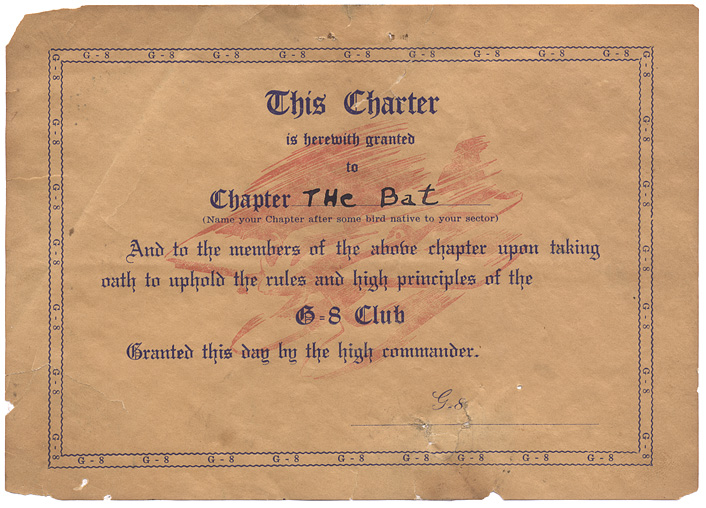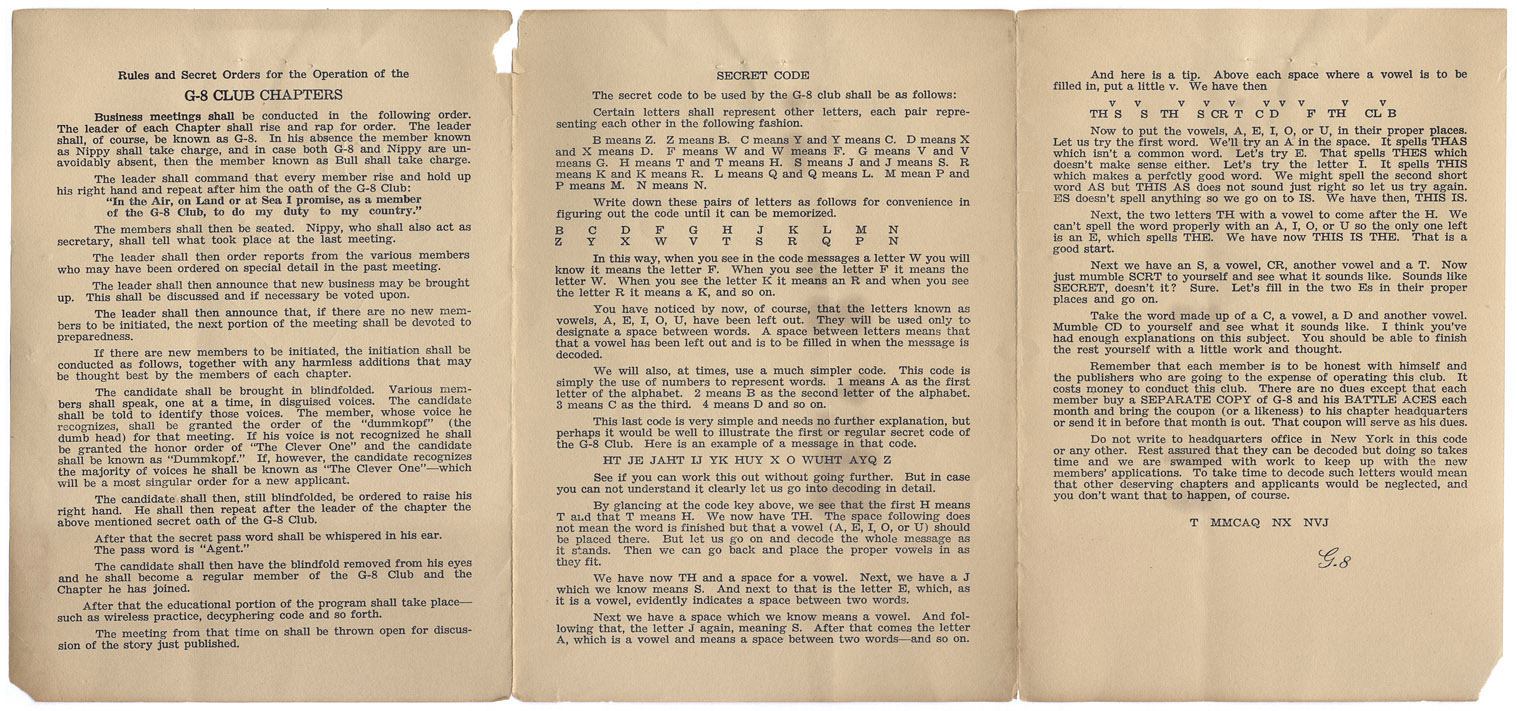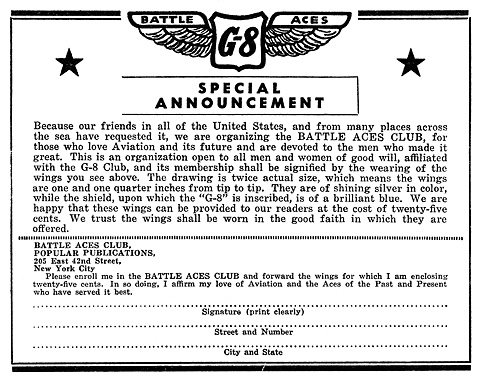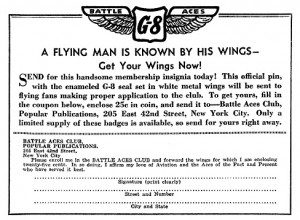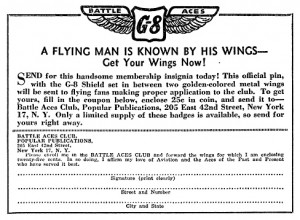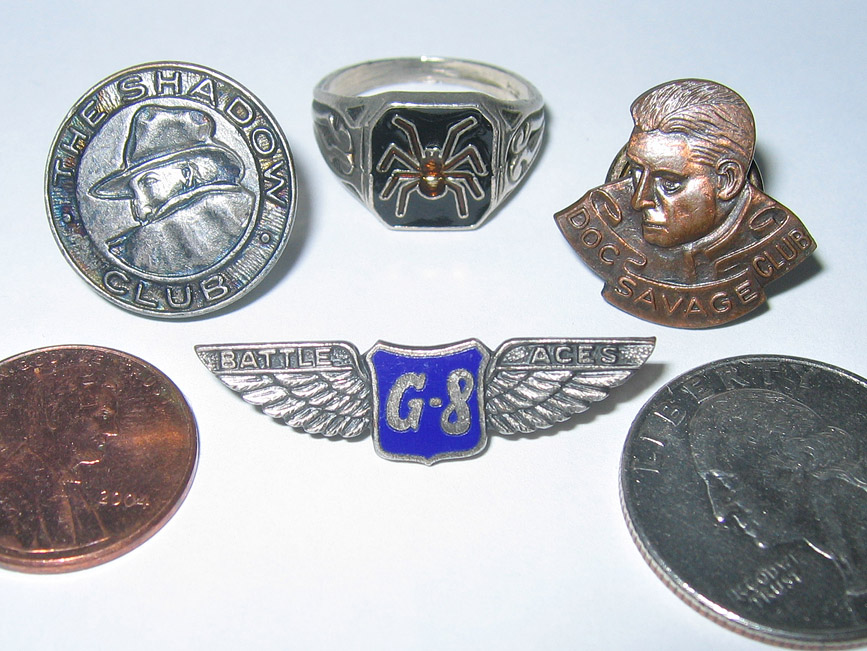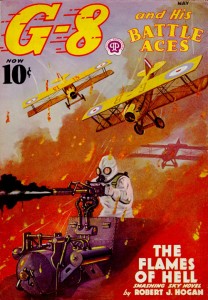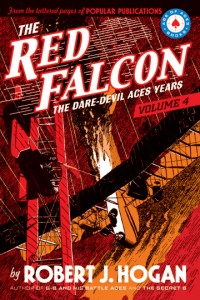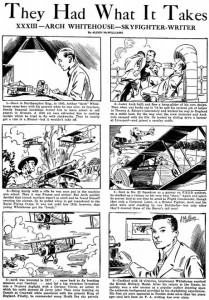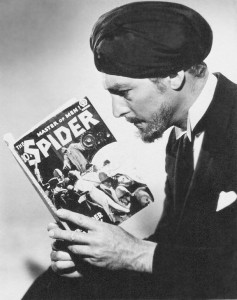Rest in Peace Sid
If you are a fan of the air war pulps, or have read some of Age of Aces’ pulp reprints, you have heard the name Sid Bradd. He has been writing articles about the air pulps for over 40 years. Many people know him from his essay in Nick Carr’s The Flying Spy, which detailed the life and adventures of G-8 and His Battle Aces. He was a supporter and contributor to our work here at Age of Aces. But more importantly, he was our friend.
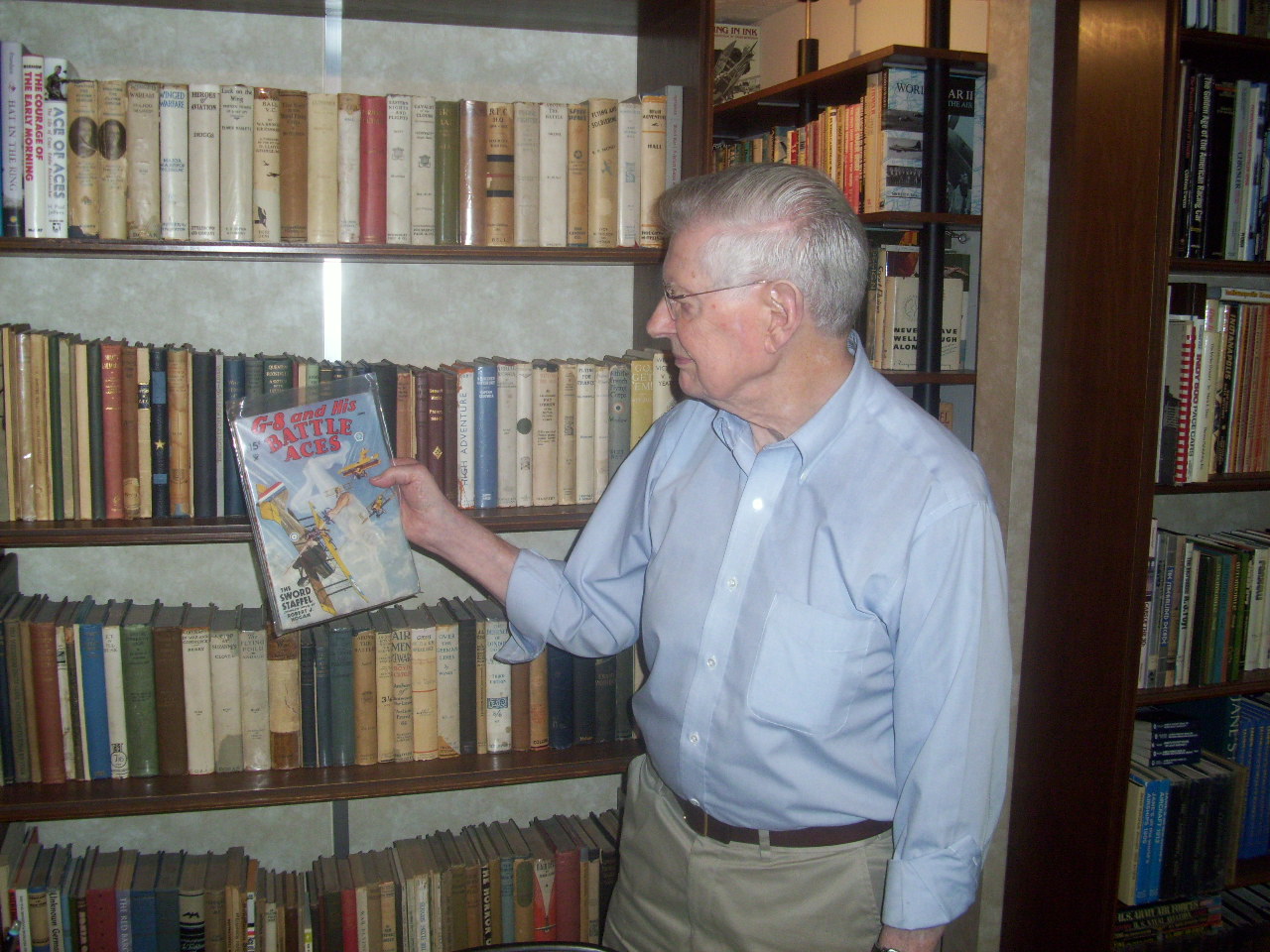
Sid died on June 19, 2012. He left behind his wife of 50 years, Johanne, and three daughters. He also left behind a countless number of fans and people who have been touched by his friendship and generosity.
While I have been reading Sid’s writings for many years, I didn’t meet him until 2007. I had contacted him to get permission to use some of his research on Robert Hogan for our first “Red Falcon” book. He not only agreed to that request, he would go on to help us on many of our other projects.
Sid had been to many Pulpcons in the past, but it had been several years since he had attended one. When it was announced in 2008 that the very first Pulpfest would be held in Columbus I thought it would be great if Sid could get there from nearby Cleveland. I talked to him about it, and I offered to drive him there and back. He took me up on it, and in July 2009 I finally got to meet Sid in person.
Of course when I got to his home, the first thing I wanted to do was see his legendary aviation and pulp library. But Johanne insisted that we have lunch first. She is an awesome person, and was incredibly kind to me on my visit. After eating, Sid led me up to his library.
He had converted the entire second floor of his house into a place to hold his extensive collection of aviation books and magazines. Every wall was bookshelves from floor to ceiling. His pulp collection had its own separate room. They were all carefully bagged and boxed alphabetically. I couldn’t wait to start digging through them.
The first ones Sid wanted to show me were his pride and joy, his complete run of pristine copies of “G-8 and His Battle Acesâ€. Sid explained that he had become acquainted with Henry Steeger of Popular Publications. When Sid mentioned to him that he wanted to upgrade his G-8 collection, Steeger gave him a complete run of unread G-8 magazines from his files.
Steeger wasn’t the only pulp magazine legend Sid had known personally. He had also spent some time with Robert Hogan and Donald Keyhoe. In fact it was Sid’s urging that convinced us to publish Keyhoe’s “Vanished Legion†stories in 2011.
Eventually I had to drag myself away from his library so we could drive to Columbus. That drive is something that I will cherish forever. For a couple hours, Sid entertained me with tales of his experiences around the pulp and aviation worlds. The time just flew by.
We spent a lot of time together that weekend, and by the time I dropped him off at home Sunday evening, I knew I had made a friend for life. Sid seemed to really enjoy that trip, especially meeting all the Age of Aces crew. I know we enjoyed spending that time with him.
Sid had another commitment and was unable to attend Pulpfest 2010. He and Johanne drove up to Columbus and he spent a couple hours one day at Pulpfest 2011. And they were both planning to attend this year’s Pulpfest, but sadly Sid left us before that could happen.
After my first visit, Sid gave me an open invitation to come back any time. And the whole Age of Aces crew was planning a visit this year on our way to Pulpfest 2012. I did talk to him on the phone many times, but I regret not seeing him again. He was a wonderful person and a good friend.
Artist and pulp historian David Saunders recently wrote about Sid’s passing. He summed up perfectly what I was feeling but struggling to put into words:
“Sid Bradd’s authority on aviation history, his inventive mind and inspiring life experience can never be replaced. He generously contributed his skills and expertise to our projects, and in so doing raised our standards higher than we had at first thought possible. Although we always thanked him in our “acknowledgements” we could never adequately express our gratitude for his reliable expertise, his inspiring encouragement and his warm-hearted friendship.
If any of our future projects should happen to sustain a veneer of authority it will be primarily due to the lasting impact of Sid Bradd.
It’s fun to imagine a ten-year-old Sid Bradd in 1935 reading G-8 and his Battle Aces and discovering his own lifelong inspiration.â€
Rest in peace Sid. We will miss you.






